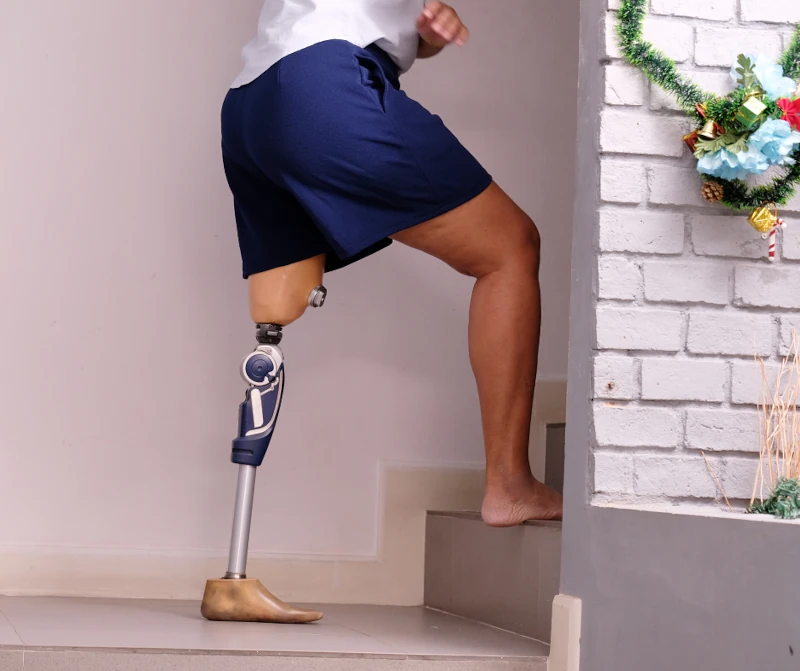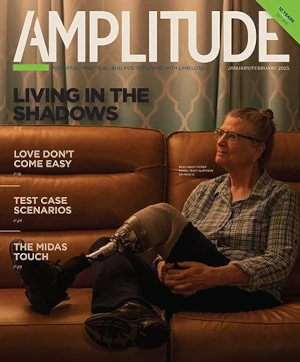
When vascular surgeon Leigh Ann O’Banion went into practice in 2017, she was shocked to learn that only about half of her patients who required lower-limb amputation went on to receive a prosthesis. The other half faced grim health challenges due to their lack of mobility. “I thought, ‘There’s got be a way that we can do better,’” O’Banion says.
So she came up with one: the Lower Extremity Amputation Procotol (LEAP), an enhanced recovery-based approach to vascular amputees. O’Banion assigned one of her clinic’s nurses to implement LEAP as a full-time amputee care coordinator, and the rate of prosthesis adoption at her practice quickly rose to 90 percent. And she reasoned that if those outcomes were attainable in her community—which includes a high percentage of low-income households, underinsured patients, and non-native English speakers—they should be possible anywhere.
Now O’Banion is working to convince other vascular surgeons to adopt LEAP. She’s shared the protocol with a handful of prominent hospitals, including Mass General and the University of Pennsylvania. She published a feasibility study demonstrating LEAP’s effectiveness across a sizable patient population. And in September she will be introducing LEAP to hundreds of colleagues at the annual conference of the Western Vascular Society.
“Surgeons in other subspecialties have implemented care pathways like this,” O’Banion explains. “They’ve done it in cancer surgery and in GI surgery, and they’ve had great success. Our intent is to produce a LEAP toolkit that anybody can download and put into practice in their own hospital system to improve care for the patient population.”
LEAP doesn’t include any unproven or experimental components. It simply creates a framework to ensure that tried-and-true practices for post-amputation care are applied consistently, rather than sporadically. The protocol involves well-established measures for pain management, physical and occupational therapy, mental health counseling, and limb-loss education. Every LEAP patient gets evaluated by a prosthetist before they leave the hospital. They also meet with an amputee peer counselor.
“This is comprehensive care of the patient, not just in the hospital, but outside the hospital long term,” O’Banion says. “The cancer world has figured this out. If you get diagnosed with cancer, you get a whole team of people involved. You get an oncologist, a surgeon, a hematologist, a social worker, a nurse navigator—you get all these people to help you through this period and ensure the best outcomes.”
LEAP operates on the same principle, and early results indicate that it delivers on its promise. LEAP patients in the feasibility study were twice as likely to end up with a prosthesis as equivalent patients whose care teams didn’t follow the protocol. Non-LEAP patients who did receive a prosthesis had to wait roughly five times as long to receive their device as their LEAP counterparts.
“We know that care pathways work,” O’Banion says. “They reduce variation in care for disparate patient populations, they provide equitable care for everybody, and they decrease the use of hospital resources.”
Even so, it will take time and effort to scale LEAP up from a promising innovation to a universal standard. The Society for Vascular Surgery took the first step by establishing a working group to develop a formal set of guidelines. In an unusual step, the group will solicit input from patients, not just from health professionals, in establishing those guidelines. There will also need to be procedures for disseminating the protocol, tracking outcomes, and setting benchmarks.
“It’s more than just an educational exercise,” says the working group’s leader, Bill Shutze, a vascular surgeon at Baylor University Medical Center. “The overall process takes about a year, and we’re just at the beginning. But it can lead to other things. We could certainly share this approach with the American College of Surgeons, the American Orthopaedic Association, and other surgeons who perform amputations.”
“We’re not changing anything,” O’Banion adds. “We’re just making it easier to do everything we know should be done. The resources are already available. We just need to get everybody working together.”
You can find a summary of O’Banion’s feasibility study in the March 2023 issue of the Journal of Vascular Surgery.




